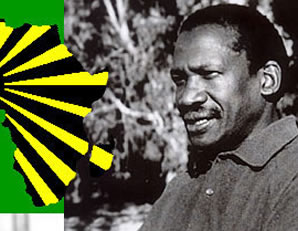What is a green building?
A Green Building is an environmentally sustainable
building designed to minimize harmful effects, e.g. release of greenhouse gases
into the air, on the environment.
Examples of Green Features in a building:
-Skylight
-Insulation in walls and ceiling
-Rainwater Collector
-Solar panels
GREEN FEATURES AT SCHOOL
1. Motion sensitive lights in De Beer House
Motion sensitive lights turn on only when people are around. This makes sure that no electricity is wasted as it eliminates the possibility of leaving the lights on. Therefore, electricity is not wasted by using it when it is not needed.
2. Skylights in the lunch hall
The skylights in the lunch hall, facing west, accompanied by its large windows, facing east, means that the lunch hall receives the most possible light throughout the day. This means that it limits the need for electric lighting by fully utilizing the natural rays of the sun in the morning and afternoon.
3. Time activated spot-light
The timed spotlight is chronologically programmed to come on at night when it is needed, making sure that no electricity can be accidentally wasted by leaving it on during the day when it is not.
4. North facing windows in De Beer House
With its north-facing windows, De Beer makes sure to get all the sunlight possible. As the sun moves from east to west, its rays are concentrated in the direction of De Beer's windows to ensure that the house gets as much of the light as possible, nearly eliminating the need for electric lighting.
NON-GREEN FEATURES AT SCHOOL
1. Poor insulation in classrooms
The fact that a heater is required is proof that the classroom is not properly insulated. Insulation would negate the need for additional heating and save electricity.
2. Rainwater Runoff
All the drainage systems in the school see the rainwater just being washed away or poured onto the ground when it should be being collected. Rainwater collection would both save water and be more economic as it would save money on the water bill.
3. Non-water efficient shower heads
The shower heads used in the bathrooms are not water-saving and often leak, which leads to wasting water. Replacing them with water-efficient shower heads would lessen the water used and make the use more efficient. Also, replacing the shower heads would lead to less leaking.
4. Single-flush toilets
The single-flush feature on the toilets means that each flush is the same amount of water and therefore occasionally excessive. Installing a dual-flush feature would lessen the water used per flush.
5. Small, badly placed windows
The windows in most of the classrooms do not face the ideal direction for letting in the most light. Also, they are tiny and high up, meaning that it is even more difficult for the sun to shine in. This results in a need for electric lighting. Larger and better placed windows would make it possible to harness as much of the sun's light as possible and cut down on electric lighting.
6. Poor ventilation
The fact that some offices in the school require air cons is a sign of bad ventilation. With better ventilation, AC units would be unnecessary and electricity could be saved. This would be both greener and more economic.
REPORT:
The ideal placements of windows in the school are evident, for example in the lunch hall and De Beer House. However, many more buildings have distinctly inappropriately laced windows, i.e. in most of the class rooms.
Lights that are only on when they are needed are plentiful in the school, saving electricity by the prevention of leaving them on by accident or overusing them. These exist around the school in the form of chronologically timed spotlights and motion sensitive ceiling lights
In regard to ventilation and insulation, several of the older buildings in the school are poor examples. Insulating the walls and ceilings can eliminate the need for AC units and heaters, saving electricity. However, in some of the newer buildings there are good examples of both.
A lot of water is wasted, there being close to no green features that assist in the careful use of water. Rainwater runs off straight into the ground or the drain and there are practically no features that assist with using it sparingly, e.g. water-saving shower heads and dual flush toilets.
CONCLUSION:
While the green features responsible for the effective use of light (sunlight or otherwise) is evident in the college, it could be bettered.
Very few buildings have proper ventilation/insulation and this results in an extended use of electricity.
New water-saving features should be installed, as very few water-saving green features exist in the school.





















